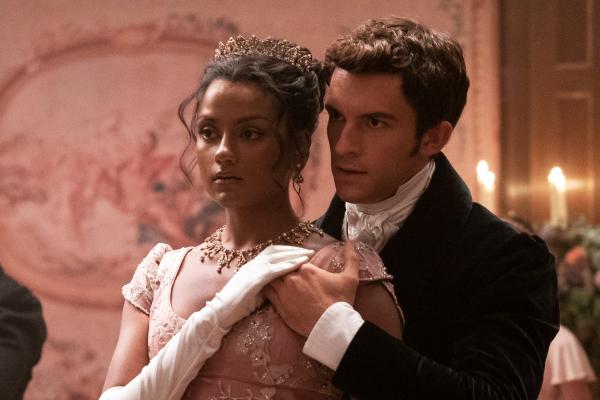Representation in Period Dramas
Share:

Bridgerton season two is here and the period drama has received wide praise yet again.
But what really excited many about this season is the introduction of the Sharmas – Kathani ‘Kate’ Sharma, her younger sister Edwina Sharma and Mary Sharma.
It was exciting for many to see the details of Indian culture – from a tel malish massage to the use of Hindi terminology, an orchestral version of the Kabhi Kushi Khabi Gham soundtrack and bright colours that suit their complexions with patterns reflecting attire popular among South Asian communities. Little things that remind us all that they are not just brown women dropped in for diversity points.

The fun of Bridgerton is that it shows people of colour in roles that you don’t see in mainstream media. It very much differs from the usual portrayals of people of colour in period pieces.
Black and brown women are written as complex as their white counterparts. They are in leadership positions such as the Queen and Lady Danbury. Edwina and Kate are portrayed as desirable women, They get to go to balls and parties and just have fun.

Many have also pointed out that representation without substance is meaningless. It isn’t enough just to have people of colour in a period drama. Having writers of colour to help integrate and represent the rich cultures and sometimes painful histories of people of colour makes it more real.
Bridgerton doesn’t make a large deal of race – in season one, Lady Danbury mentions briefly that King George III marrying a black woman desegregated society and granted black and brown people titles and privilege.
Historical shows can act as sources of education, pushing people to learn about the real stories within the entertainment. Is it wrong that Bridgerton doesn’t make a bigger deal of race?
Recommended Reading: TV Review, Bridgerton

One could argue it is more a form of escapism. For people to see themselves in roles that traditionally have been reserved for white actors. That doesn’t make 12 Years A Slave less important, but it is exhausting constantly being represented in servitude and in pain.
Bridgerton is an example of how you can have people of colour in a period drama outside of servant roles or someone being racially abused. Not that these stories are not important, but it is equally important to show the other side of that history – or even fantasy.
Whilst we eagerly await the show’s return (or rewatch the season!), here are some period drama shows and films featuring diverse casts:
Belle (2013)
An emotional movie based on the life story of one of Britain’s first black aristocrats. Gugu Mbatha-Raw portrays Dido Elisabeth Belle Lindsay who is taken in by her uncle and has to face the issues of growing up mixed race, yet an aristocrat in a Britain that trades slaves.

Lovecraft Country
A horror anthology that takes the horrific monsters of H.P Lovecraft’s work and the horrific atmosphere of 1950s America. Atticus (Jonathon Majors) travels across the county with the help of his uncle and friend to try and find his father. An entertaining watch for horror fans.

Still Star Crossed (2017)
Bridgerton isn’t Shonda Rhimes’ first foray into a period drama re-imagining. Still Star Crossed looks at the Capulets and Montagues after the death of Romeo and Juliet. Lashana Lynch portrays Rosaline who is betrothed to Benvolio in an attempt to keep peace in fair Verona. ‘Attempt’ is the keyword.

David Copperfield (2019)
Armando Iannucci’s re-imagining of Dicken’s classic novel features an all-star and diverse cast with Dev Patel portraying the eponymous character, detailing his whimsical life from childhood to adulthood.

